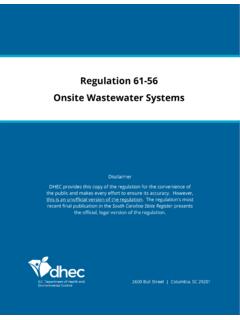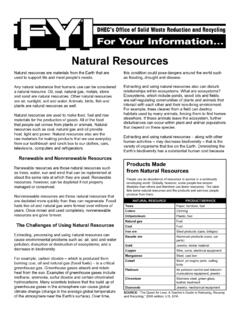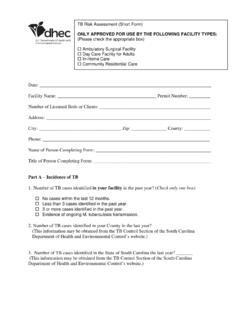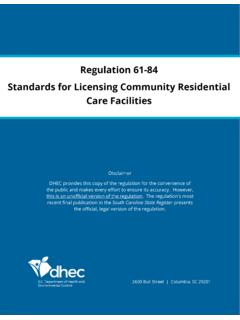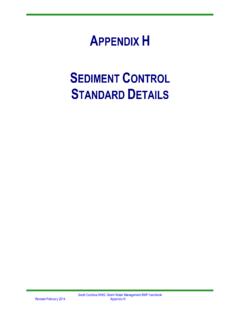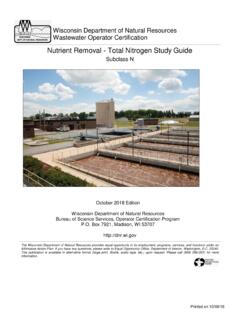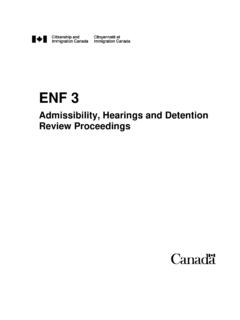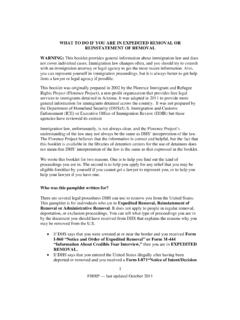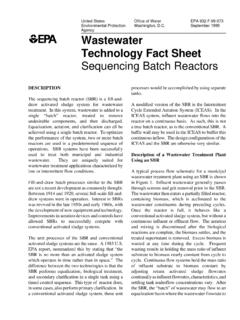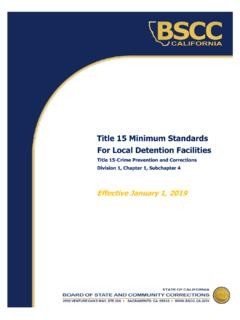Transcription of Dry Detention Ponds - SCDHEC
1 Dry Detention Ponds South Carolina DHEC July 31, 2005 Storm Water Management BMP Handbook 122 Dry Detention Ponds Description A dry (extended) Detention pond provides temporary storage of storm water runoff. Dry Ponds have an outlet structure that detains runoff inflows and promotes the settlement of pollutants. Unlike wet Ponds , dry Detention Ponds do not have a permanent pool. A dry pond is designed as a multistage facility that provides runoff storage and attenuation for both storm water quality and quantity. Design dry Detention Ponds as either single-stage or two-stage. Single-stage Ponds are normally used strictly for flood control and are not recommended for water quality benefits. A two-stage pond contains a water quality volume in the lower stage, and has an upper stage for Detention of larger storms for flood control. The lower stages of a dry pond are controlled by outlets designed to detain the storm water runoff for the water quality volume for a minimum duration of 24-hours, which allow sediment particles and associated pollutants to settle out.
2 Higher stages in the pond detain the peak rates of runoff from larger storms for flood and erosion control. Dry Detention Ponds are designed for complete drawdown of runoff and normally remain dry between storm events. When and Where to Use It Apply dry Detention Ponds to new or existing developments. Dry Ponds are considered permanent, year-round control measures. Use dry Detention Ponds at sites where significant increases in runoff are expected from site development. Use dry Detention Ponds for residential, commercial, or industrial development sites. Do not use dry Ponds in areas with a high water table. A permanently wet bottom is a mosquito breeding ground. While dry extended Detention Ponds are widely applicable, they have some limitations that may make other storm water management options preferable. Dry pond limitations include: Possible nuisance due to mosquito breeding. While wet Ponds can increase property values, dry Ponds may detract from the value of a home.
3 Dry Detention Ponds have only moderate pollutant removal when compared to other structural storm water practices, and have limited effectiveness in removing both particulate and soluble pollutants. Design Criteria Items to incorporate in dry pond design are: pretreatment, pond shape, pond volume, low flow channel, outfall, emergency spillway, and anti-seep collar. Ponds shall be designed for the 2 and 10-year storms The 10-year storm should not pass through the emergency spillway A minimum 6-inch freeboard between the 10-year water surface and emergency spillway is required The 100-year storm should not overtop the embankment Pretreatment Pretreatment extends the functional life and increases the pollutant removal capability of dry Ponds . Pretreatment reduces incoming velocities and captures coarser sediments, trash, and debris, extending the life of the pond and reduce the frequency of long-term maintenance requirements.
4 Dry Detention Ponds South Carolina DHEC July 31, 2005 Storm Water Management BMP Handbook 123 Pretreatment is accomplished with vegetative filters, forebays, or manufactured treatment devices. Size the pretreatment to capture and hold the sediment volume expected between scheduled maintenance clean-outs. Pond Shape Design dry Ponds with a high length to width ratio and incorporate other design features to maximize the flow path effectively increases the Detention time in the system by eliminating the potential of flow to short circuit the pond. A dry pond relies on the process of sedimentation for removal of runoff pollutants. Therefore, design the pond to maximize the degree of sedimentation. Design flow path lengths with long, narrow pond configurations with length to width ratios of 2:1. Ponds that are shallow and have larger surface area to depth ratios provide better pollutant removal efficiencies than smaller, deeper Ponds .
5 Designing Ponds with relatively flat side slopes also helps to lengthen the effective flow path. Do not design dry pond inside side slopes should not be more than 2H:1V. The recommended inside pond slopes is 3H:1V with a 2H:1V maximum. The pond floor should have a minimum slope of toward the outlet or underdrain system. The recommended slope is to ensure that the pond fully drains between storm events. Provide adequate maintenance access for all dry Detention Ponds . Pond Volume Dry Detention Ponds are sized to temporarily store the runoff volume to provide normal peak flow reduction (reduce the post-development peak flow of the design storm event to the pre-development rate). Routing calculations must be used to demonstrate that the storage volume is adequate. A properly designed dry pond will accumulate sediment over time, leading to the loss of Detention volume, runoff quality control and quantity control.
6 An increase in a dry Detention pond s maximum design storm storage volume should be considered to compensate for this expected loss of storage volume. Low Flow Channel A low flow channel is recommended to prevent standing water conditions. Protect this channel with a TRM or other stabilization method to prevent scouring. Design the remainder of the pond to drain toward this channel. Where recreational uses are desired, design the low-flow channel to one side instead in the middle of the pond. Outfall Size the outlet structure for water quality control and water quantity control (based upon hydrologic routing calculations.) The outlet may consist of a weir, orifice, outlet pipe, combination outlet, or other acceptable control structure. Provide a low flow orifice capable of releasing the water quality volume over 24 hours. The water quality orifice has a minimum diameter of 2-inches and is adequately protected from clogging by an acceptable external trash rack.
7 Stabilize the outfall of dry Ponds to prevent scour and erosion. If the pond discharges to a channel with dry weather flow, care should be taken to minimize tree clearing along the downstream channel, and to reestablish a forested riparian zone in the shortest possible distance. Dry Detention Ponds South Carolina DHEC July 31, 2005 Storm Water Management BMP Handbook 124 Emergency Spillway Design an emergency spillway to pass the 100-year storm event. The spillway prevents pond water levels from overtopping the embankment and causing structural damage. Design the spillway to protect against erosion problems. Anti-seep Collars Provide seepage control or anti-seep collars for all outlet pipes. Inspection and Maintenance A Pond Maintenance Plan/Agreement is required before approval. Regular inspection and maintenance is critical to the effective operation of dry Ponds as designed. Maintenance responsibility for a pond should be vested with a responsible authority by means of a legally binding and enforceable maintenance agreement that is executed as a condition of plan approval.
8 Conduct inspections semi-annually and after significant storm events to identify potential problems early. Direct maintenance efforts toward vegetation management and basic housekeeping practices such as removal of debris accumulations and vegetation management to ensure that the pond dewaters completely to prevent mosquito and other habitats. Average Pollutant removal Capability Total Suspended Solids: 45%-68% Metals: 26%-54% Copper: 15%-38% Lead: 31%-67% Zinc: 15%-45% Total Phosphorus: 14%-25% Total Nitrogen: 19%-29% Pathogens/Bacteria: 20%-50% Dry Detention Ponds South Carolina DHEC July 31, 2005 Storm Water Management BMP Handbook 125 Dry Pond Dry Pond Summary of Maintenance Requirements Required Maintenance Frequency Note erosion of pond banks or bottom Semi-Annual Inspection Inspect for damage to the embankment Monitor for sediment accumulation in the facility and forebay.
9 Ensure that inlet and outlet devices are free of debris and operational Annual Inspection Repair undercut or eroded areas Mow side slopes Pesticide/ Nutrient management Litter/ Debris removal Standard Maintenance Seed or sod to restore dead or damaged ground cover. Annual Maintenance (As needed) removal of sediment form the forebay 5 to 7 year Maintenance Monitor sediment accumulations, and remove sediment when the pond volume has been reduced by 25%. 25 to 50 year Maintenance Repair undercut or eroded areas Mow side slopes Pesticide/ Nutrient management Litter/ Debris removal Standard Maintenance
